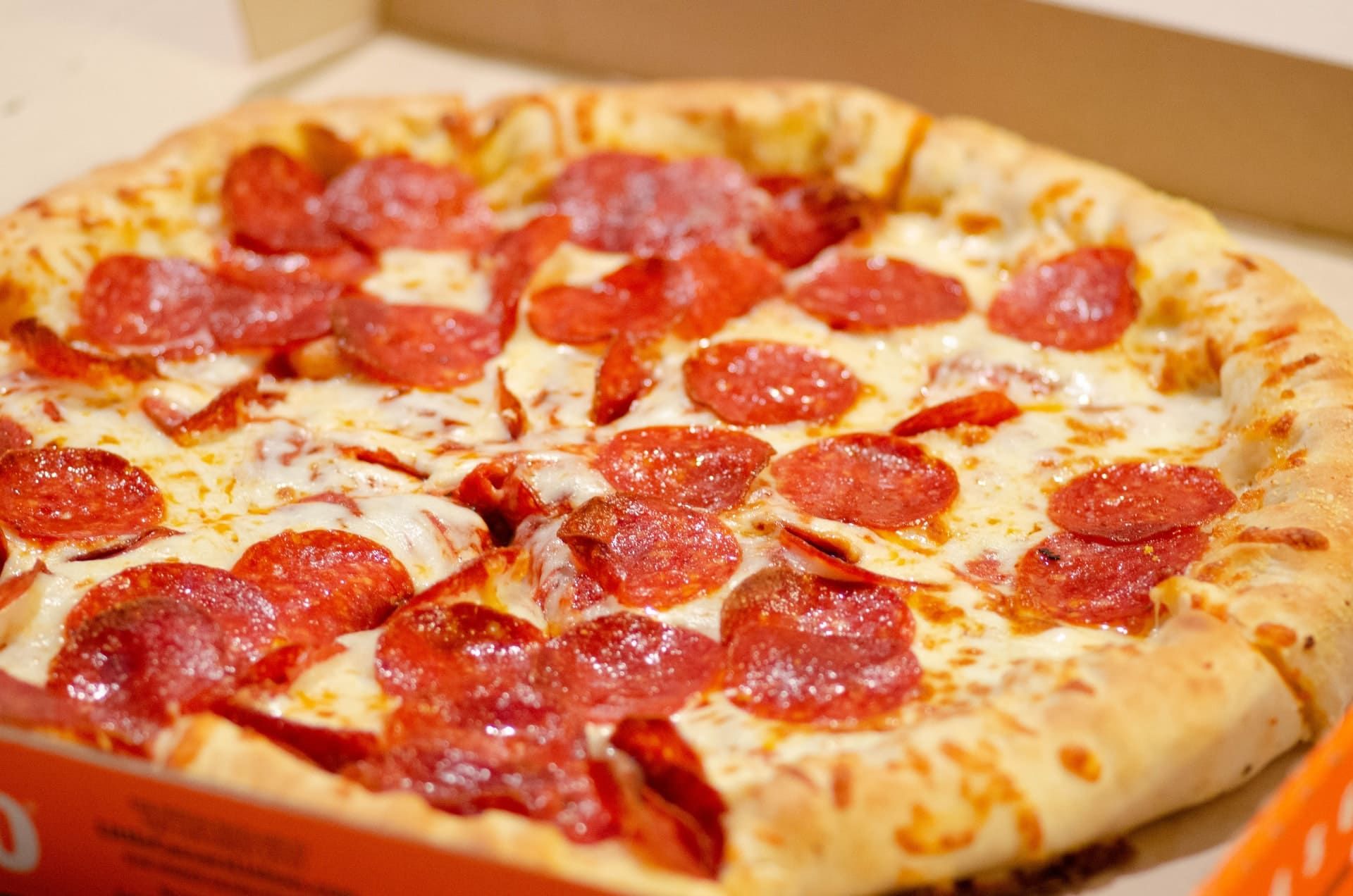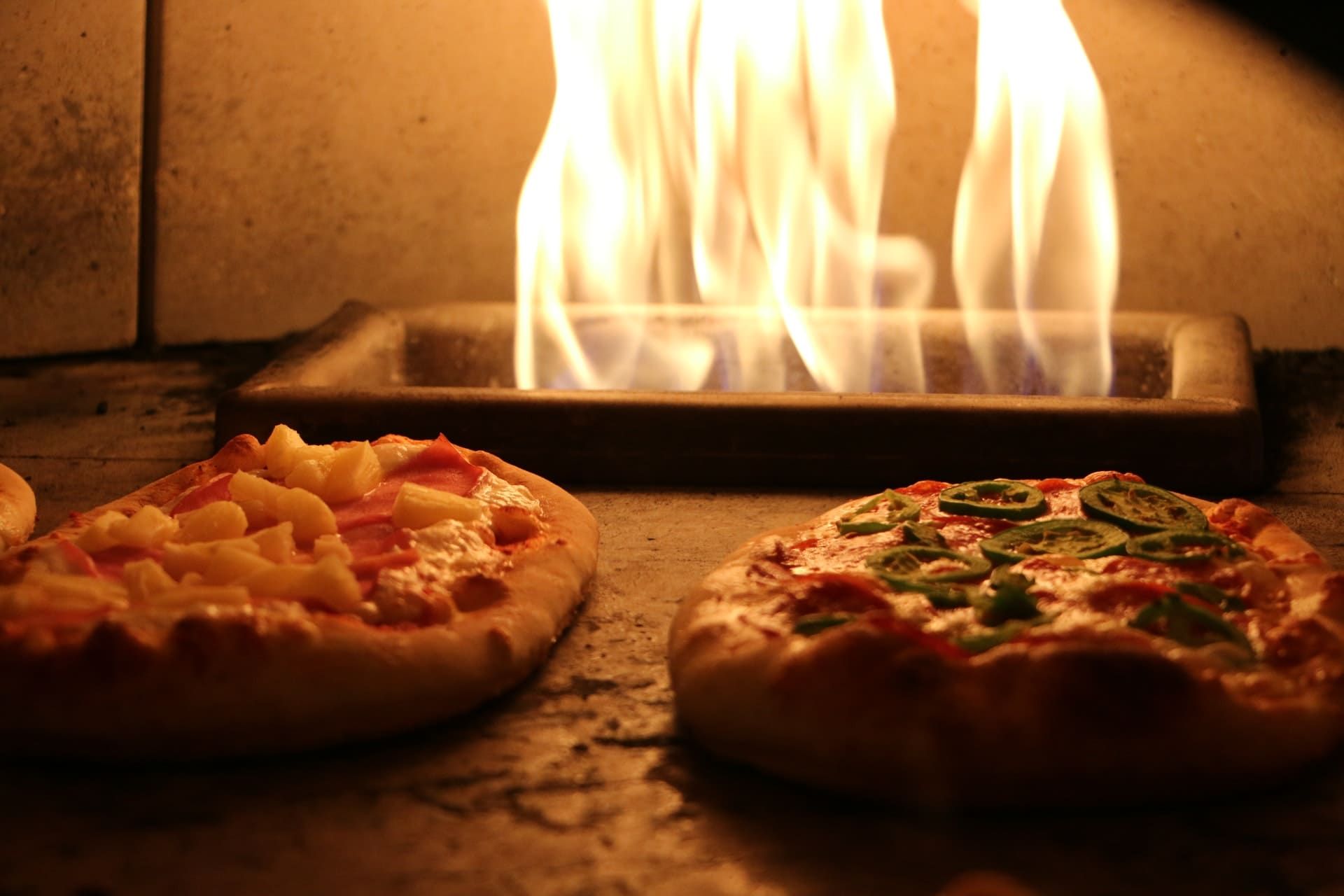
Pepper
03-01-2022
Pepperoni is an American variety of spicy salami made from cured pork and beef seasoned with paprika or other chili pepper. Prior to cooking, pepperoni is characteristically soft, slightly smoky, and bright red. Thinly sliced pepperoni is one of the most popular pizza toppings in American pizzerias. The term 'pepperoni' is a borrowing of peperoni, the plural of peperone, the Italian word for bell pepper. The first use of 'pepperoni' to refer to a sausage dates to 1919. In Italian, the word peperoncino refers to hot and spicy peppers.
Pepperoni, an Italian-American creation, is a cured dry sausage, with similarities to the spicy salamis of southern Italy on which it is based, such as salsiccia Napoletana piccante, a spicy dry sausage from Naples, or the soppressata from Calabria. The main differences are that pepperoni is less spicy, has a finer grain (akin to spiceless salami from Milan), is usually softer in texture, and is usually produced with the use of an artificial casing. Pepperoni is mass-produced in America to meet the demand for the sausage, which is frequently used as a pizza topping.
Pepperoni is made from pork or from a mixture of pork and beef. Turkey meat is also commonly used as a substitute, but the use of poultry in pepperoni must be appropriately labeled in the United States. Curing with nitrates or nitrites (usually used in modern curing agents to protect against botulism and other forms of microbiological decay) also contributes to pepperoni's reddish color, by reacting with heme in the myoglobin of the proteinaceous components of the meat.
According to Convenience Store Decisions, Americans consume 251.7 million pounds of pepperoni annually, on 36% of all pizzas produced nationally. Pepperoni has a tendency to curl up from the edges in the heat of a pizza oven. Some pepperoni is produced in thicker slices, so that the edges curl intentionally. Pepperoni is also used as the filling of the pepperoni roll, a popular regional snack in West Virginia and neighboring areas. In the Canadian province of Nova Scotia, deep fried pepperoni served on its own (usually with a honey mustard dipping sauce) is common pub food.
In Italy, pizza served in a restaurant is presented unsliced, and is eaten with the use of a knife and fork. In casual settings, however, it is cut into wedges to be eaten while held in the hand. The term pizza was first recorded in the 10th century in a Latin manuscript from the Southern Italian town of Gaeta in Lazio, on the border with Campania. Modern pizza was invented in Naples, and the dish and its variants have since become popular in many countries. It has become one of the most popular foods in the world and a common fast food item in Europe, North America and Australasia; available at pizzerias (restaurants specializing in pizza), restaurants offering Mediterranean cuisine, via pizza delivery, and as street food. Various food companies sell ready-baked pizzas, which may be frozen, in grocery stores, to be reheated in a home oven.
Mozzarella cheese is commonly used on pizza, with the buffalo mozzarella produced in the surroundings of Naples. Other cheeses are also used, particularly Italian cheeses including provolone, pecorino romano, ricotta, and scamorza. Less expensive processed cheeses or cheese analogues have been developed for mass-market pizzas to produce desirable qualities like browning, melting, stretchiness, consistent fat and moisture content, and stable shelf life. This quest to create the ideal and economical pizza cheese has involved many studies and experiments analyzing the impact of vegetable oil, manufacturing and culture processes, denatured whey proteins, and other changes in manufacture. In 1997, it was estimated that annual production of pizza cheese was 1 million metric tons (1,100,000 short tons) in the U.S. and 100,000 metric tons (110,000 short tons) in Europe.




